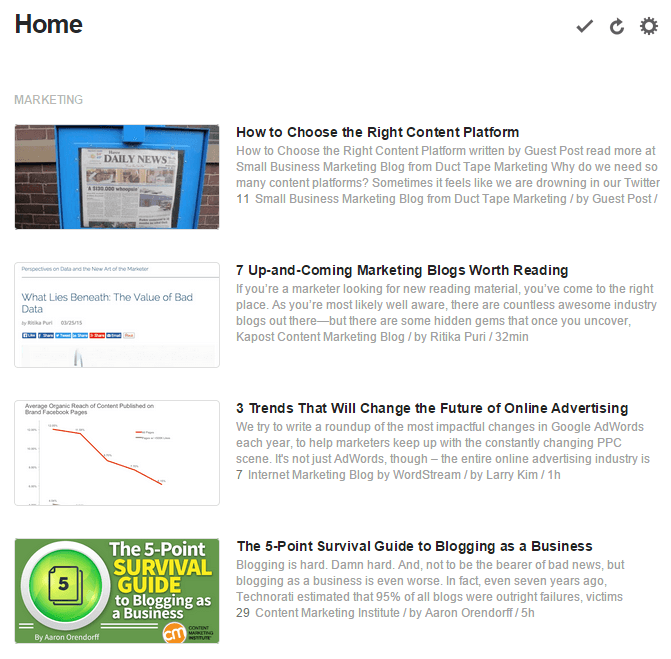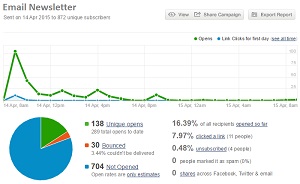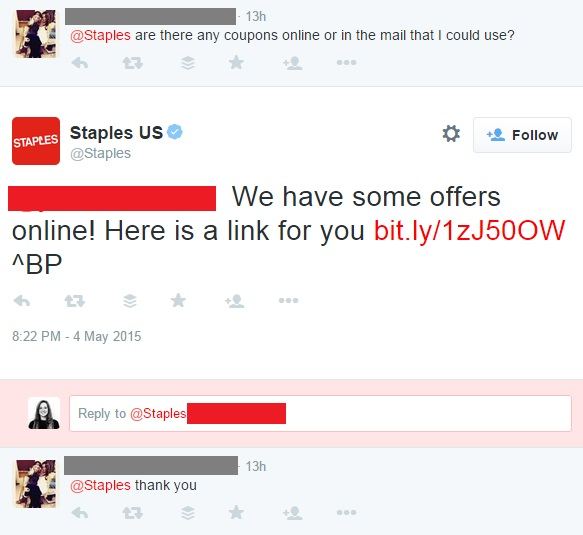-
 6 min. read
6 min. read
-
 Trevin Shirey
Trevin Shirey VP of Marketing
VP of Marketing
- Trevin serves as the VP of Marketing at WebFX. He has worked on over 450 marketing campaigns and has been building websites for over 25 years. His work has been featured by Search Engine Land, USA Today, Fast Company and Inc.
Even for the most dedicated marketers, it can be difficult to keep up with the constantly-changing nature of the Internet. There are new developments almost every day, and sometimes it can feel like just when you think you finally have a handle on your marketing strategy, there’s a new algorithm update, tactic, or social platform to throw a wrench into it. Here’s the thing: there is no foreseeable end to this string of trends and updates.
But instead of seeing them as a force to be contended with, it’s time to embrace them. If you make staying up to date on developments in Internet marketing a priority, there’s a chance that one or two will be valuable to your business – and that you don’t have to worry about coming across as outdated. So how can you stay up to date without spending all of your time obsessing over marketing trends?
Keep reading to find out.
Get into the habit of reading industry news
One of the easiest ways to keep your marketing strategy from becoming outdated is simply keeping up with marketing news. There are many ways to do this, but personally, I recommend using an RSS reader and setting aside a few minutes a day to read an article or two.
For example, I use Feedly, and when I log in, I’m immediately presented with the newest posts from marketing blogs and sites I subscribe to:  You don’t need to read every single blog post or article in your feed, but making this a part of your daily routine will make you at least aware of what’s going on in the marketing world. And if you learn a few particularly useful pieces of information in the process, that’s even better. In addition to subscribing to marketing-related publications, you can also use these same tools to keep up with news specific to your industry.
You don’t need to read every single blog post or article in your feed, but making this a part of your daily routine will make you at least aware of what’s going on in the marketing world. And if you learn a few particularly useful pieces of information in the process, that’s even better. In addition to subscribing to marketing-related publications, you can also use these same tools to keep up with news specific to your industry.
This will not only help you keep an eye on your competitors, but can also serve as a way to get ideas for your original content.
Look at your strategy as a whole
 All of the separate tactics and techniques you use to grow your business should come together to form a cohesive marketing strategy, especially when it comes to the digital elements. Instead of looking at individual aspects (like SEO and content marketing) as separate entities, you should see them as pieces of a whole.
All of the separate tactics and techniques you use to grow your business should come together to form a cohesive marketing strategy, especially when it comes to the digital elements. Instead of looking at individual aspects (like SEO and content marketing) as separate entities, you should see them as pieces of a whole.
As marketing evolves, this mindset becomes even more important. The sheer number of new marketing opportunities makes it impossible to use all of them, so focus on the ones that work logically with your existing strategy. This isn’t to say that you should avoid getting creative, but that you should spend more time looking into the channels that will likely benefit your business.
For example, if you’re marketing a B2B software company with a target demographic of business owners ages 45-54, you may want to avoid spending time and energy building presences on platforms like Pinterest and Tumblr. You should also take this approach when evaluating your existing strategy. If a particular tactic or channel doesn’t fit well with your overall image, it’s time to eliminate it and make room for something new.
Measure your ROI
 Most aspects of Internet marketing are extremely easy to measure, and you should definitely take advantage of that. By measuring, testing, and analyzing all aspects of your marketing strategy, you can see what your potential customers respond to – and what they don’t. Look at information like email clickthrough rates, on-site conversion rates, and the ROI of your paid advertising methods, among other things, and use this information to adjust your strategy accordingly.
Most aspects of Internet marketing are extremely easy to measure, and you should definitely take advantage of that. By measuring, testing, and analyzing all aspects of your marketing strategy, you can see what your potential customers respond to – and what they don’t. Look at information like email clickthrough rates, on-site conversion rates, and the ROI of your paid advertising methods, among other things, and use this information to adjust your strategy accordingly.
By changing or eliminating individual elements that aren’t performing well, you can reduce the chances that your marketing tactics feel outdated to consumers. Although we’re focusing on Internet marketing, this rule should also apply to the traditional methods your company uses. Print ads, direct mail, and other offline components are more difficult to measure, but if you want your marketing to be as efficient and current as possible, you need to track everything.
For more information on tracking offline advertising, check out this blog post.
Listen to your customers
In recent years, social media has become an integral part of many companies’ Internet marketing – and for good reason. The average American spends 37 minutes per day on social networks, and 46% of Internet users say they look to social media when making a purchase.
That being said, if you treat it like every other marketing channel, it isn’t going to do anything for your business. Instead of emphasizing specific products and using obviously sales-y language, your business should use social media to engage with current and potential customers and build brand loyalty. Over time, this will work in your favor more than traditional advertising.
In fact, in the case of Staples, some customers actually reach out to them on social media in search of purchasing information:  Engagement doesn’t just mean appealing to them, though. Social media allows your customers to voice their opinions, and while that may sound potentially dangerous, it can be beneficial to both you and them. They have the opportunity to make their concerns heard, and you have the opportunity to receive honest feedback on your company and marketing.
Engagement doesn’t just mean appealing to them, though. Social media allows your customers to voice their opinions, and while that may sound potentially dangerous, it can be beneficial to both you and them. They have the opportunity to make their concerns heard, and you have the opportunity to receive honest feedback on your company and marketing.
By listening to your customers first, you don’t have to worry about whether or not they’ll think your strategy is outdated. If they have a say in it from the beginning, there’s a strong chance that they’ll like it.
Don’t feel obligated to use every new marketing strategy
As the marketing landscape evolves, it can feel like there’s a new strategy, tactic, or platform coming out every week.
The best way to handle the constant changes is by understanding that you don’t need to use every single one. For example, if you’re leading a medical device marketing initiative, you may use a combination of online and offline strategies, as well as approaches for staying up-to-date. Maybe you subscribe to newsletters, attend conferences, and monitor social media chatter to keep your strategies fresh.
While I recommend keeping up with industry news, and possibly running a few tests with promising channels, that doesn’t mean that every trend will work for your particular business. It’s better to choose a few channels that work really well than to use every single one available to you poorly. I hope that this post will help you create and maintain a current marketing strategy that resonates well with your potential customers, but if you have any questions, feel free to ask in the comments below!
And if you have any additional tips for keeping marketing strategies from becoming outdated, I’d love to hear them.
-
 Trevin serves as the VP of Marketing at WebFX. He has worked on over 450 marketing campaigns and has been building websites for over 25 years. His work has been featured by Search Engine Land, USA Today, Fast Company and Inc.
Trevin serves as the VP of Marketing at WebFX. He has worked on over 450 marketing campaigns and has been building websites for over 25 years. His work has been featured by Search Engine Land, USA Today, Fast Company and Inc. -

WebFX is a full-service marketing agency with 1,100+ client reviews and a 4.9-star rating on Clutch! Find out how our expert team and revenue-accelerating tech can drive results for you! Learn more
Try our free Marketing Calculator
Craft a tailored online marketing strategy! Utilize our free Internet marketing calculator for a custom plan based on your location, reach, timeframe, and budget.
Plan Your Marketing Budget

Maximize Your Marketing ROI
Claim your free eBook packed with proven strategies to boost your marketing efforts.
Get the GuideTry our free Marketing Calculator
Craft a tailored online marketing strategy! Utilize our free Internet marketing calculator for a custom plan based on your location, reach, timeframe, and budget.
Plan Your Marketing Budget





